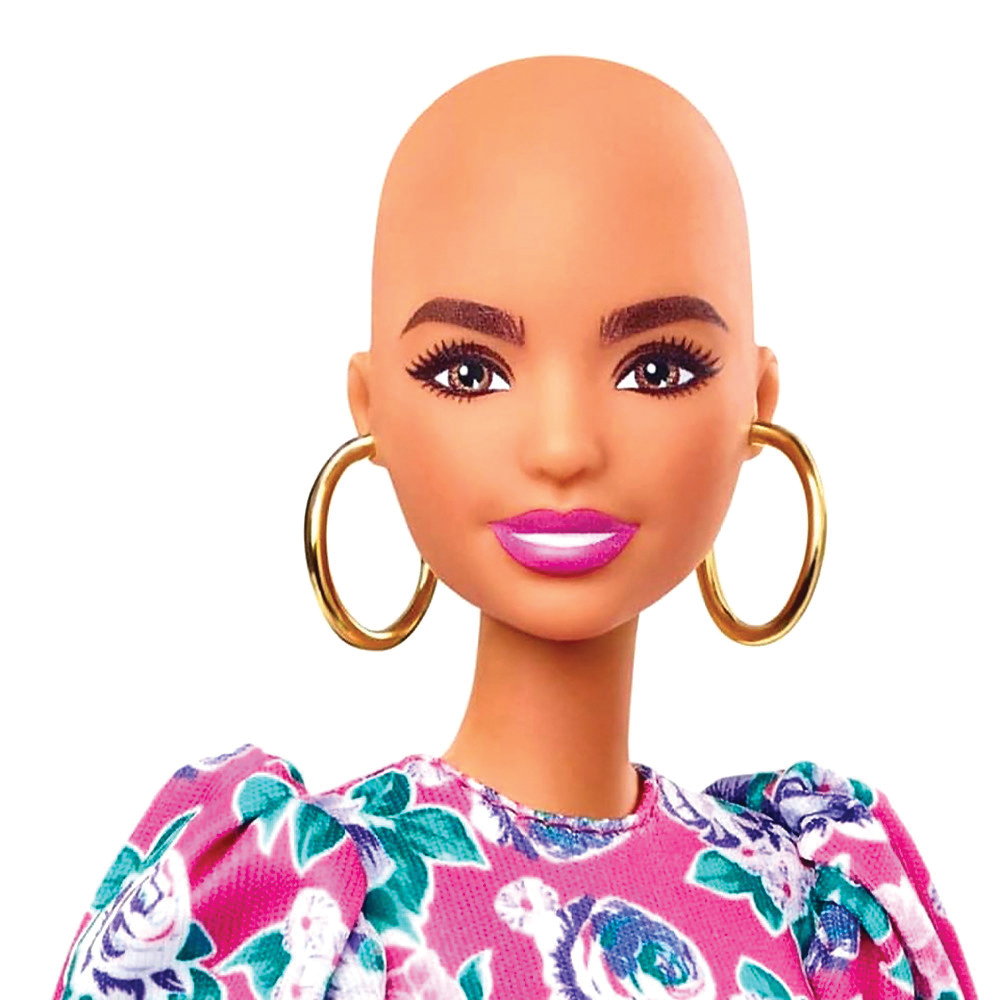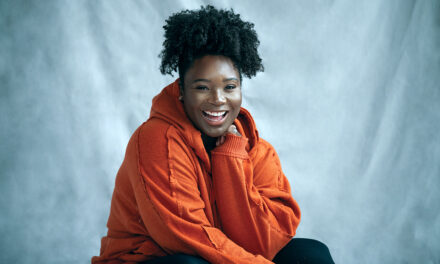Alopecia areata, an autoimmune skin disease that causes hair loss, impacts millions of women around the world. Two local women share their personal stories of fighting for their hair, their confidence, and their self-identity.
They say when hair falls out in a dream, it indicates intense worries about sickness, loss of sexual appeal, or even death. That’s how attached we are to our hair. For so many women, our hair is proof of our femininity, beauty, and vitality, and it’s the last line of defense between us and the rest of the world.
It’s why we invest so much time and money in making it look good.
According to one study, women spend an average of 10 days a year washing, conditioning, blow drying, dyeing, curling, straightening, and braiding, and that’s before they go to the stylist. Feeling good about our hair fuels success. In one study, 25 percent of women said they feel more productive on “good hair days.”
On the other side of the spectrum, the experience of losing hair can be completely traumatizing, especially for women.
In 2018, after battling with alopecia areata for years, actress Jada Pinkett Smith talked openly about her condition on her Facebook Watch series “Red Table Talk. “It was terrifying when it first started. I was in the shower one day, and then just handfuls of hair—just in my hands—and I was like, Oh, my God, am I going bald? It was one of those times in my life when I was shaking with fear. That’s a really scary experience.”
Pinkett Smith’s condition is not that rare. Alopecia areata is an autoimmune skin disease that causes hair loss on the scalp and face and sometimes on other parts of the body. At some point in their lives, almost 7 million people in the United States have been impacted by it.
Two of those people—Stacy Clift and Julie Bednar—lost nearly all the hair on their heads to alopecia and faced private and painful battles to reinvent their appearance and their confidence. Here, they share intimate details of their battle with alopecia and what they’ve learned about themselves along the way.
I put on my wig every day, and you really can’t tell that I don’t have real hair. I’m learning to love myself. Everyone must do what works for them, and that’s what I’m trying to do. —Julie Bednar


Firsthand Advice
What should you do if you notice significant hair loss? Stacy Clift shares her best advice.
1. Consult a doctor Dermatologists specialize in conditions that affect the hair, skin, and nails. Thorough bloodwork is a great place to start to rule out or identify possible causes of hair loss.
2. Take pictures Document thinning or bald patches. This will make tracking your progression easier.
3. Pursue help Wigs and hairpieces are not like shoes; they can’t be bought online. Find a wig salon that will assist you in finding options that make you feel and look like you.
4. Get inspired Some incredible women use social media to share their hair loss journeys with grace and humor. You will learn a lot and will be in awe of how fantastic they look.
Follow alopecia stories:
@mama.is.bald
@baldmothertucker
@alopecia.candyco

“When you see a bald Barbie, it feels like it’s being normalized.”
—Stacy Clift
Julie’s Story
It started for Julie Bednar, 53, in her early thirties, when she and her husband, Steve, were trying to have a baby. The couple was running three restaurants, so stress was a fact of life. She endured four rounds of in vitro fertilization (IVF) to try to get pregnant, and when she did, she suffered a miscarriage. “I was going through so much hormonally,” Bednar recalls. “I went to get my hair cut, and my hairdresser says, ‘Did you notice that you have like a quarter-size section of hair missing out of the back of your head?’ From there, my hair started to progressively fall out.”
At first, she tried to treat it naturally with homeopathic remedies, including rubbing mineral oils on her scalp. When that didn’t work, she tried various medications prescribed by her doctor. She clung to the hair she had left, spraying bald spots to create the look of hair. “People asked me if I had cancer. It was hard, but I was going through so much. My father was sick with stage IV lung cancer, and my husband and I couldn’t have a child,” she says. “It felt like the end of the world was coming.”
The couple ended up adopting a baby from China in 2006, and they named her Abby. But the battle with her hair continued, a journey Bednar describes as devastating at times. “Losing my hair was bad. I remember the day I shaved my head. My husband asked me what I was crying about,” she recalls. “Steve said, ‘Don’t you see the beautiful human that you are and know that you’re not defined by your hair even a little bit?’”
Then, in 2019, something happened that shook the foundation of Bednar’s life, making the struggles with her hair the furthest thing from her mind. “I woke up one morning, and my husband was nonresponsive. He had died in his sleep,” she says. “I lost every ounce of my identity. I honestly didn’t want to be here without my husband.”
As her identity and her appearance changed so drastically, Bednar was faced with more questions than answers. But she didn’t quit, and in 2022 Bednar began to find her way. She continued to run one of the restaurants she and Steve owned together—Pizza Time Saloon in Lansdale, PA. Her daughter, Abby, now 19, goes to West Chester University. And she has a boyfriend she loves. “I think I had defined myself as a wife and a mother—not as myself. I’m learning that it takes women way too long to realize they should do things for themselves,” Bednar says. “Now I put on my wig every day, and you really can’t tell that I don’t have real hair. I’m learning to love myself. Everyone must do what works for them, and that’s what I’m trying to do.”

I looked in the mirror and realized my eyebrows and eyelashes were falling out. That day hit me really hard. That might have been harder than the hair on my head because I felt like it really changed my appearance. It rocked my confidence because when I looked in the mirror, especially when I didn’t have makeup or fake eyelashes on, I didn’t recognize the person staring back.”
Stacy’s Story
Stacy Clift, 44, was a little girl when she was first diagnosed, so life with alopecia areata is all she’s ever known. Despite the frightening diagnosis, the scores of specialists she saw, and the painful steroid injections she sometimes endured, Clift didn’t expect to lose her hair. “I was told that maybe one day it will go away, or maybe not, but it was something that I could pretty easily hide,” Clift recalls. “I struggled with it, but I had it for so long that I thought it would never really get much worse. I was wrong.”
About 10 years ago, at the most inopportune moment, her worst fears came true. In the months and weeks leading up to her wedding, as she prepared to marry her now husband, Byron, the hair on her head started to completely fall out. “I quickly went from being able to conceal it to, OK, I need to get a wig,” she says.
Losing her hair was stressful, and it took time for Clift to get to a place of comfort and acceptance. And for a few years, she hovered there, discovering what wigs worked and felt most natural. Then, about 2 years later, she began to lose hair on her face, which was when she reached a breaking point. “I looked in the mirror and realized my eyebrows and eyelashes were falling out. That day hit me really hard. That might have been harder than the hair on my head because I felt like it really changed my appearance,” Clift says. “It rocked my confidence because when I looked in the mirror, especially when I didn’t have makeup or fake eyelashes on, I didn’t recognize the person staring back.”
But life continued to march on, and the couple had two children, a son named Sam and a girl named Alice. During that time, and with help from therapy, Clift invested time into learning how to do her own makeup and style her wigs, so she felt more like herself. “I felt like, If I have to deal with this, then I need to get good at building my confidence, and I took makeup classes so I could hone that skill,” she says. “I got pretty good at it. Most people don’t even know what I am dealing with when they see me.”
She got so good at it that she offered up her skills to help other women, and about 3 years ago, she was hired as a wig consultant at a salon. In her role, she often helps women who are losing their hair, in many cases because of chemotherapy, to find wigs that work for them and help them find renewed confidence. “It is such a special and unique position to be in, to help these ladies who are dealing with hair issues that can be caused by so many different factors. It’s not just chemo. I see women with autoimmune diseases, reactions to COVID, menopause, hormones—so many things can cause women to lose their hair,” Clift says. “I love my job, and I think [my clients] like seeing that someone else is wearing a wig and owning it and looking good doing it.”
Clift still receives medical attention for alopecia areata. In fact, she was part of a clinical trial for one drug, which did help her see some regrowth. Now she takes Olumiant, a drug that was originally intended for people who had rheumatoid arthritis, which is also an autoimmune disease. “They discovered that it was improving hair growth, so it’s being used to treat severe alopecia areata, and people have seen success on it. I am only a few months into that drug, and the jury’s still out,” she says. “But honestly, I don’t care if my hair doesn’t grow back. I have had time to come to terms with that, and I’m OK.”





